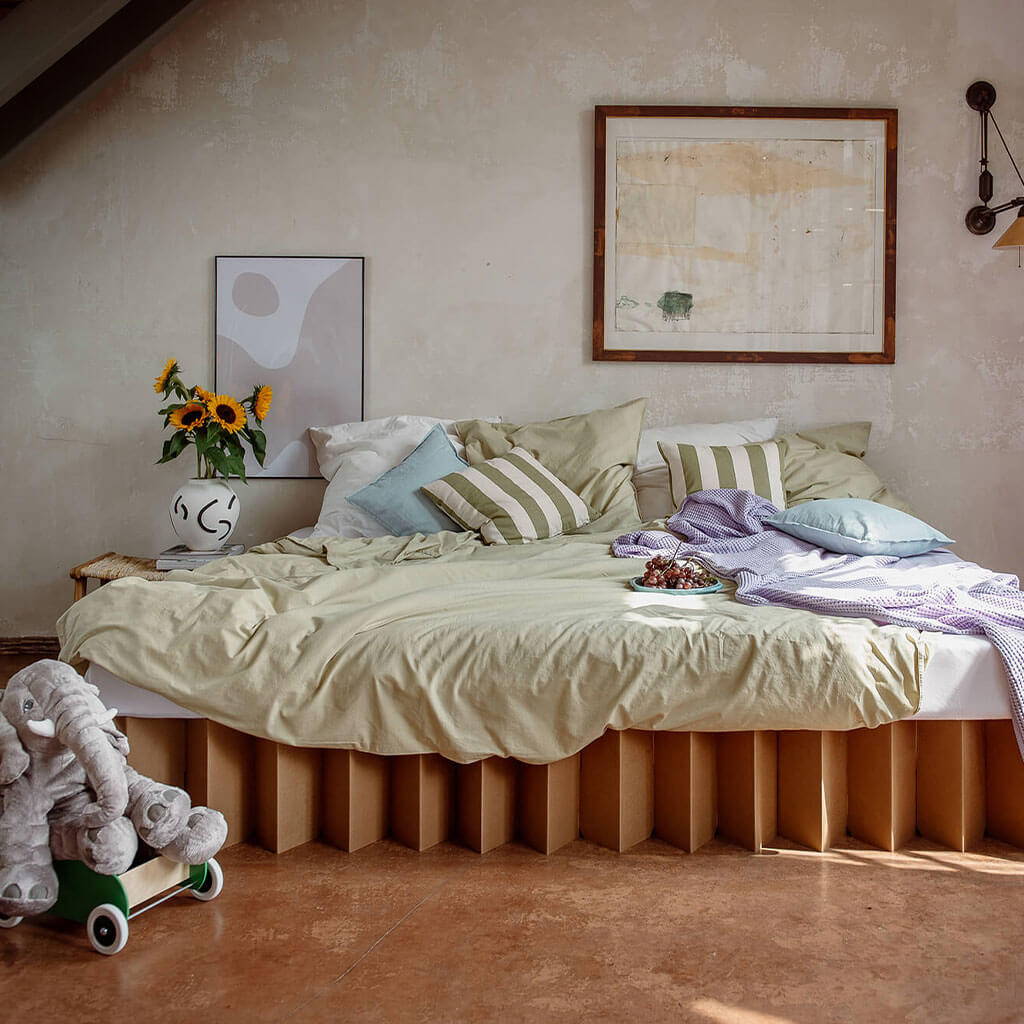To fully embrace the benefits of a family bed with peace of mind, it's important to follow a few key safety measures.
BED SIZE
A shared bed should provide ample space for everyone to sleep comfortably without the risk of overheating. When it comes to size, bigger is always better! The ROOM IN A BOX family bed comes in widths ranging from 225 to 276 cm and can be expanded with additional single beds, making it an ideal choice for larger families seeking a restful sleep environment.
MATTRESSES
For safe co-sleeping, a firm mattress is preferable to one that is too soft. If the bed consists of multiple mattresses, any gaps between them should be filled with wedges to create a seamless surface. Natural latex mattresses are the healthiest option, offering both firm support and breathability while remaining free from harmful chemicals.
BED RAILS
Infants should ideally sleep next to their mother on the outer edge of the bed, with a secure bed rail in place for protection. Bed rails come in various designs, and our family bed allows for easy attachment to ensure your baby’s safety.
BEDDING
To minimize risks, keep blankets, pillows, and stuffed animals away from your baby’s sleep space. The safest option is a well-fitted sleep sack, which keeps infants warm without the need for loose bedding.
ALCOHOL, DRUGS, AND MEDICATION
Both parents should avoid co-sleeping if they have consumed alcohol, smoked, used drugs, or taken certain medications. Cigarette smoke residue, even when exhaled during sleep, can be harmful to infants and increases the risk of sudden infant death syndrome (SIDS). Alcohol and other substances impair awareness and reaction time, raising the likelihood of accidental rolling onto the baby. The same applies to strong medications such as sleeping pills, which can cause excessive drowsiness.
SIBLINGS
When multiple children share the family bed, infants should not be placed next to older siblings, as they may accidentally roll over during sleep. Creating a designated sleep space for each child ensures safety and comfort for everyone.







